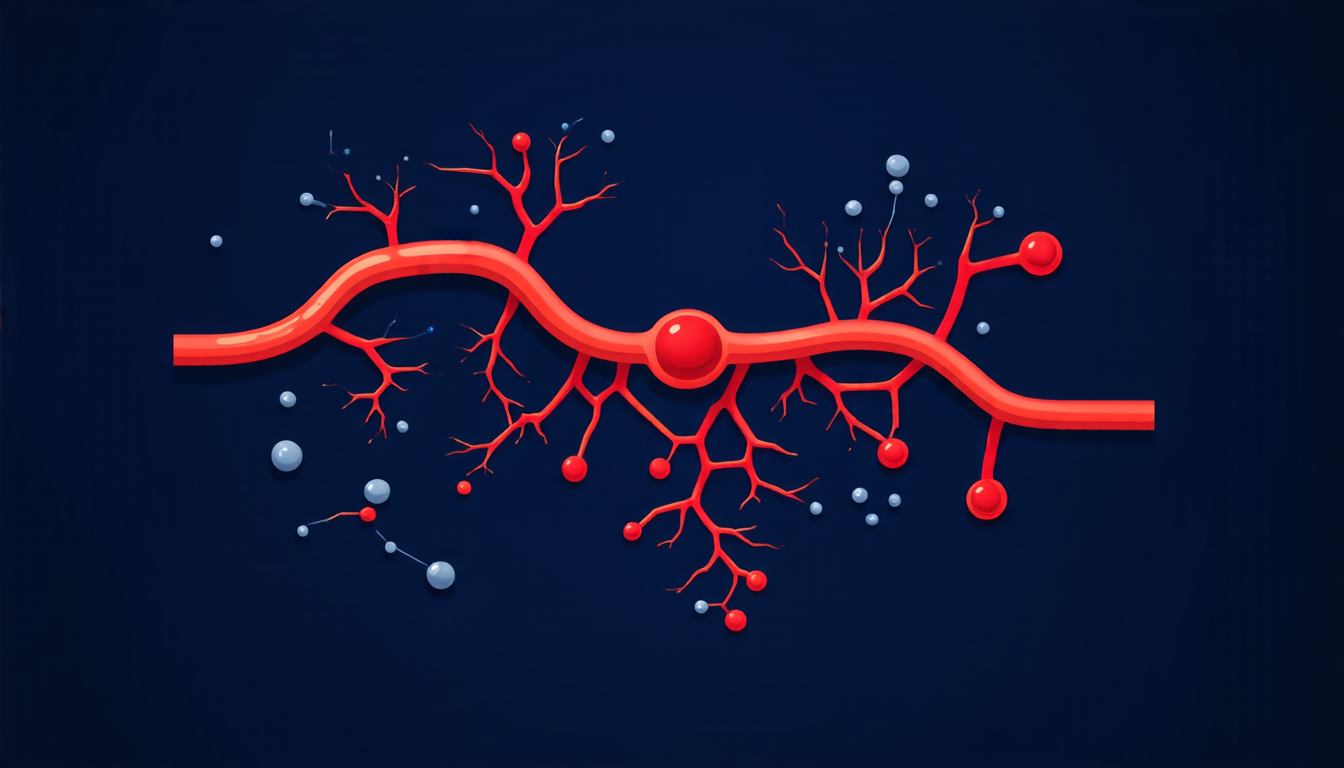Monday 05 May 2025
Scientists have made a significant breakthrough in understanding how blood flows through arteries, particularly in those areas where blockages can occur. This research has the potential to improve our comprehension of cardiovascular disease and potentially lead to new treatments.
The study focused on the flow of hybrid nanofluids, which are mixtures of nanoparticles and blood, through stenotic arteries. These arteries have narrowed sections that can restrict blood flow and increase pressure, leading to conditions like atherosclerosis. The researchers used complex mathematical models and numerical simulations to analyze how these nanofluids behave in different scenarios.
The results showed that the addition of copper and aluminum oxide nanoparticles to blood significantly altered its behavior. In particular, the fluid became more viscous, meaning it was thicker and more resistant to flow. This change affected the way the blood flowed through the stenotic artery, with the velocity decreasing near the center of the vessel.
The researchers also found that the non-Newtonian properties of the nanofluid played a crucial role in its behavior. Non-Newtonian fluids do not follow the usual rules of fluid dynamics, and their viscosity changes depending on the flow rate and pressure. In this case, the nanofluid’s increased viscosity led to a more turbulent flow pattern near the artery walls.
The study also investigated how different parameters affected the flow of the nanofluid. These included the pulsatile pressure gradient, which simulates the heartbeat, as well as the magnetic field strength and the concentration of nanoparticles. The researchers found that increasing the magnetic field or nanoparticle concentration had a significant impact on the fluid’s behavior.
One of the most interesting findings was that the addition of copper and aluminum oxide nanoparticles could potentially reduce the risk of blood clotting. Clotting is a major concern in cardiovascular disease, as it can lead to blockages and even heart attacks. The researchers believe that the nanoparticles may help to prevent clotting by altering the fluid’s surface properties.
This study has significant implications for our understanding of cardiovascular disease and the development of new treatments. By better understanding how blood flows through stenotic arteries, researchers can develop more effective ways to diagnose and treat conditions like atherosclerosis. The addition of nanoparticles to blood may also provide a new avenue for preventing blood clotting and reducing the risk of cardiovascular events.
Overall, this research highlights the importance of interdisciplinary collaboration between scientists from different fields.
Cite this article: “Unlocking the Secrets of Blood Flow in Stenotic Arteries”, The Science Archive, 2025.
Cardiovascular Disease, Nanofluids, Blood Flow, Stenotic Arteries, Nanoparticles, Copper, Aluminum Oxide, Non-Newtonian Fluids, Fluid Dynamics, Magnetic Fields.







